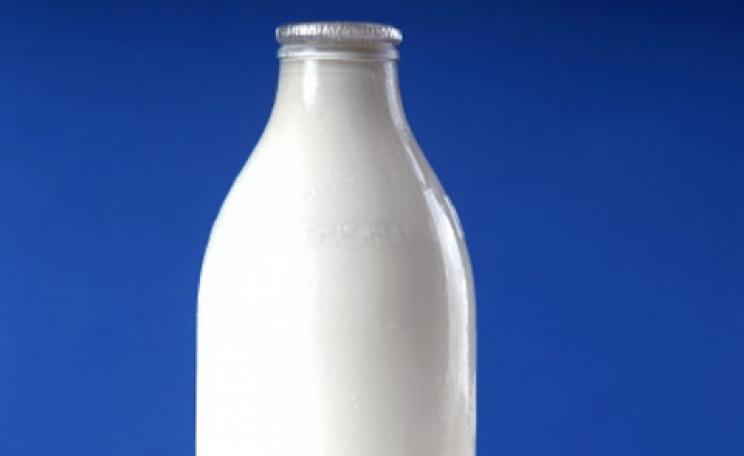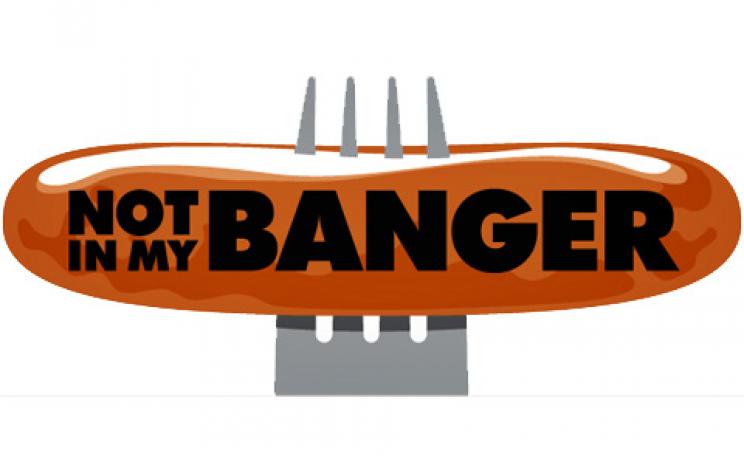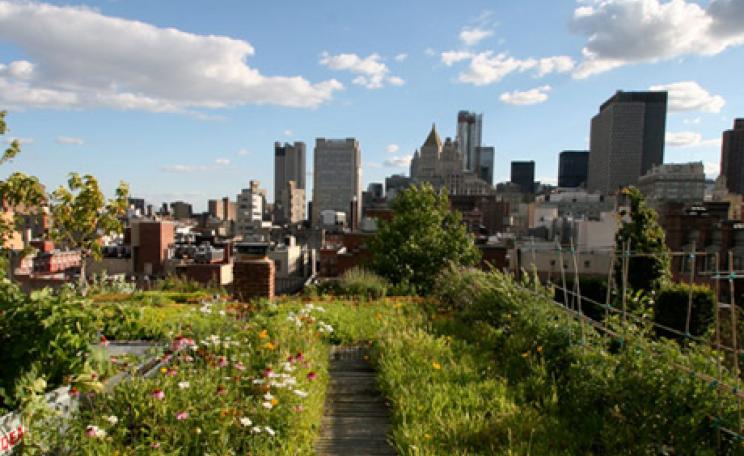With an application to build the UK's largest dairy farm near Nocton, in Lincolnshire, due in this week, advocates of the proposal say it will substantially reduce the environmental impact of milk production in comparison to existing smaller farms.
The farmers behind the expected 4,000 plus cow unit go as far as to suggest it will 'surpass the highest environmental standards ever seen in the UK'. This remains questionable, however, with the initial application made earlier this year having stalled because of concerns about land and water pollution resulting from the farm.
The Environment Agency cited an 'unacceptable risk to groundwater supplies' and a failure to show how the farmers intended safely to dispose of the estimated 180,000 tonnes of slurry expected to be produced by the cows every year.
Dairy production is already a well-known problem sector, producing high amounts of methane and nitrates from cow slurry, nitrogen pollution from fertiliser use for animal feed and carbon emissions from land-use and production. Overall the sector accounts for 4 per cent of the world's total greenhouse gas emissions (GHG), according to a report from the UN Food and Agriculture Organization (FAO) earlier this year.
The FAO assessment also revealed emissions per unit of milk produced were actually less in the bigger and more intensive EU and US dairy systems. The farmers behind the Nocton 'super dairy' believe the scale of their proposed dairy unit will enable them to reduce overall GHG per unit of milk to some of the lowest levels seen in the UK.
Tara Garnett, research fellow at the Food Climate Research Network (FCRN), acknowledges this may be true and says intensive systems tend to be able to get more units of milk out of a cow for every unit of input they put in. 'If you feed a cow loads of protein it will produce more methane, but if you only need two cows to do the job of three you are eliminating one cow and therefore more methane.'
However, she adds a note of caution: the high-yielding cows used in such systems are usually unable to last beyond about two to three lactations, a shorter lifespan than lower-yielding cows. 'If a cow goes to slaughter and you have to rear a new heifer in its place then that cow is going to be eating lots of protein and producing lots of methane for two years before it produces any milk, which is in a sense a waste of methane.’
Anaerobic digester
Another much-touted benefit of mega-dairy farms is the potential they offer for mitigating pollution through the use of anaerobic digesters. According to the FAO, methane emissions from slurry can be reduced by 50-75 per cent as a result. The UK government has been keen to promote the uptake of anaerobic digestion, particularly on farms, where it can be used to convert slurry into biogas, for the generation of renewable power.
The Nocton proposal will include installing such a digester. Whereas other sites - such as the UK's current largest installation at Holsworthy in Devon - rely on transporting slurry in and out of nearby farms, Nocton will be kept going by its own waste alone, thereby reducing additional carbon emissions.
However, concerns have been raised about emissions of nitrogen oxides, carbon monoxide and ammonia from digesters, and their impact on air quality for nearby residents. In a statement, the UK-based manufacturers BiogenGreenfinch said a 'certain amount of nitrogen oxide' was released but that emissions were tightly regulated by the Environment Agency.
Grazing cows and biodiversity
Proponents of smaller dairy units say that while large-scale units such as Nocton would benefit from an anaerobic digester, their zero-grazing approach would cost them the advantages of allowing cows to feed on grasslands. Although the evidence is mixed, some suggest grazing-based systems maintain grasslands that in turn absorb or sequester carbon dioxide as they grow.
The added benefit of biodiversity and land conservation would also be lost in a wholescale switch to large-scale, zero-grazing dairy units. Although accounting for only a small part of overall GHG emissions, grazing-based livestock production provides an avenue for managing grasslands and uplands.
The FAO has admitted that its assessment did not include any assessment of the wider range of environmental issues associated with the dairy sector, including water resources and biodiversity loss. It plans to revise its calculations in 2011. Tara Garnett from FCRN says how we judge the biodiversity impact of large-scale dairy farms such as Nocton may come down to a decision about how we want to use our countryside.
High-yielding systems may leave large amounts of land with minimal biodiversity but may also use less land overall, leaving more free for biodiverse habitats, she says. In other words, should we attempt to achieve good levels of biodiversity across the whole countryside or accept a smaller number of 'biodiversity hotspots'?
Water and soil pollution
Whatever benefits a digester may bring does not take away from the other environmental impacts, specifically soil and water pollution. More than 60 per cent of nitrate pollution enters the water from agricultural land. Anglian Water, which is responsible for water supplies at the proposed site of the Nocton dairy unit, says it spent £80 million between 2005 and 2010 in treating nitrate-polluted water. A spokesperson said it had 'voiced its concerns' to the Environment Agency, which must approve any proposal, about the building of such a large-scale dairy farm. One of the farmers behind the Nocton farm has a previous conviction for polluting a stream and killing more than 70 fish.
Soil and water expert Professor Phil Haygarth, of Lancaster University, says intensive dairy systems require large amounts of nitrogen and phosphorus in order to produce the milk in high quantities. The key to judging the environmental impact of the farm is how it deals with these excess nutrients and avoids problems such as leaching and run-off from spreading waste slurry on farmland.
In the case of Nocton, the farm plans to have increased storage space for manure, something Professor Haygarth says is a good step, with many smaller dairy farms often having inadequate storage facilities. 'The problem smaller farms have is that when these tanks get full they have to empty them, and are under pressure to get it onto the land, and as such are prone to risk spreading it at bad times for water quality, such as before it is going to rain,' he says.
The other question for mega-dairy units such as Nocton is whether they have enough farmland available to spread the waste slurry they generate. With one major landowner near the proposed site having already said he would not accept manure from the dairy unit, the farmers behind the 'super dairy' have admitted they may end up having to start with a much smaller dairy unit than originally planned.
Even if they do end up finding other farmers willing to take the slurry, the distance they may be forced to transport the waste could end up adding to the farm’s environmental footprint through additional transport emissions. The Nocton farm is already expected to require more than 14 HGV deliveries a day for animal feed and milk collections. 'The fundamental issue with this intensive system is that a nice ecological dairy system means animals and the landscape working together, recycling muck back to the land. This dairy unit does not have that land so is using other farms. The issue is how accessible will those farms be and can they avoid all these nutrients building up on the farm?' Professor Haygarth says.
Taxpayer support for farm
Even those that accept large-scale dairying may end up lowering emissions say it only works on the 'narrowest definition'. It could be seen as environmentally efficient in that it concentrates highly productive systems in a narrow geographical area, argues Friends of the Earth food campaigner Nik Beuret. But, he adds, the 'jury is still out' on whether its lifecycle benefits are more beneficial than smaller agroecological systems of farming, and it is wrong for EU farming subsidies to be paid for this type of farming without public debate.
The farmers behing the Nocton proposal claim they will grow the majority of their animal feed locally and only import additional requirements from Europe and not soya linked to deforestation in South America and Indonesia. Beuret says this is not an argument in favour of large-scale dairying. ‘The fact is that if every farm scaled up like Nocton there is no way they could all source their feed locally, and in the end would rely on a massive displacement of land overseas.'
Author Simon Fairlie agrees. He recently published a book on the environmental impact of meat and dairy production and says dairy farming had already moved in the wrong direction; switching to large-scale 'monstrosities' would take us further away from a balanced and sustainable farming system. 'Milk is already a ridiculous system and is being trucked and packaged all over the place. What we need is a mixed system with small farms using livestock in conjunction with agriculture,' he says.
The biggest argument against large-scale dairying may end up being the unsustainability of the system, based on a high reliance on animal feeds, that it perpetuates, argues Tara Garnett. 'However efficient your system is we cannot continue consuming as we do. The difference in GHG emissions and yield is not greater than the difference between keeping dairy levels globally as they are and then doubling by 2050. Any savings in efficiency will be outweighed by the sheer anticipated scale of production at a global level.’
Some suggest arguments over the environmental impact of dairy farming risk ignoring this bigger issue of consumption and how we rear livestock. 'It's jumping the gun to debate whether mega-dairy is efficient, before people have agreed whether it is fair and humane,’ says Food Ethics council director Tom MacMillan. ‘If ethical ways of farming meat and dairy are less efficient, then we need to eat less of their products. The answer clearly isn't to be unethical more efficiently.'
| READ MORE... | |
 |
NEWS ANALYSIS UK farmers face dilemma over 'super-dairy' plans Plans for an 8,100-cow dairy farm at Nocton in Lincolnshire will ‘polarise’ farming in the UK and destroy smaller rural-based family farms say those working in the sector |
 |
INVESTIGATION Undercover investigation:The shocking cost of US 'mega-dairies' With planning permission for Britain's biggest dairy at Nocton about to be re-submitted, The Ecologist travels to California to examine intensive milk production - and finds factory farms, conflict, intimidation, pesticides, pollution and small-scale farmers driven out of business... |
 |
NEWS ANALYSIS Have we got it right on meat and greenhouse gas emissions? Analysis showing lower greenhouse gas emissions associated with intensive livestock production could pose a challenge to our views on best farming practice |
 |
NEWS 'Super-dairy' may only meet 'minimum' welfare standards Advocates of Britain's biggest dairy farm, at Nocton, have sold the concept on the basis of its outstanding animal welfare and environmental credentials. But new evidence suggests this may not be possible without public funding |
 |
COMMENT It's time we copied the Malaysians and ate less meat and dairy As Earth Overshoot Day gets earlier every year, David Nussbaum argues that changing our diets to less meat and dairy could help us stay within the planet's environmental limits |








